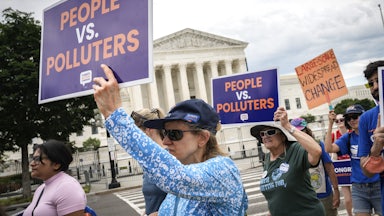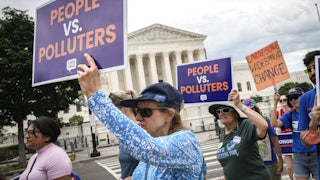While they remain a singularly popular pop-culture genre, the police and court procedurals that draw the eyes and attention of television viewers on a daily basis have, unfortunately, given most people an idealized view of how our legal system works. This is never more true than in how the public has come to view the role that science and forensic evidence play in criminal proceedings. Judges and juries are supposed to weigh evidence from scientific experts presenting the most current version of the scientific consensus in their areas of expertise. So how do so many people keep going to jail based on junk science?
Part of the blame lies with judicial arrogance. Contrary to our mythology around the judiciary, judges are not objective observers and often struggle to remove personal and societal biases from their analyses of the cases before them. Despite not being scientists, judges, led by the U.S. Supreme Court, have concentrated power in themselves at the expense of reliance on scientific expertise.
Although the Supreme Court’s recent ruling in Loper Bright v. Raimondo, which overturned Chevron deference by courts to agency experts, does not impact courtroom deliberations directly, it provides a glimpse into this all-consuming arrogance of the judiciary—and its misaligned confidence in its ability to discern truth, despite both empirical and anecdotal evidence of its inability to do so effectively. The stakes for criminal defendants could not be higher.
And we are currently in a face-to-face crisis with the high costs of this arrogance. Robert Roberson has been on death row in Texas since 2003 after being found guilty of murdering his 2-year-old daughter via “shaken baby syndrome.” The problem? The entire premise of shaken baby syndrome, or SBS, has been seriously discredited.
Defendants convicted under shaken baby syndrome theories, including Roberson, have been challenging their convictions based on these scientific developments, and some have even been successful. However, despite decades of evidence that SBS cannot be accurately diagnosed as its own disorder or injury, Roberson is set to be the first person in the United States executed because of the mythology that’s been erected around SBS. Even though Roberson has a legitimate claim to make against his conviction, which has earned bipartisan support in Texas and nationwide, the Texas Supreme Court paid all of this no heed, recently clearing the way for Roberson’s execution without the opportunity for a new trial.
Unfortunately, our courts’ willingness to accept lethal junk science is not restricted to SBS. The problem is so widespread that, in recent years, Texas and six other states have passed laws allowing defendants to appeal their convictions on the basis of advancements in science to ensure no one remains in prison over faulty evidence and theories. Nevertheless, some legislators say that the law is not being properly applied in Roberson’s case.
The steadfast unwillingness to reckon with the faulty science that may send a man to his death also flies in the face of what other states have done to curb the destructive effects of junk science. Elsewhere, courts have established higher standards, holding that certain scientific evidence—such as the faulty theories of drug recognition experts—may not be used as evidence. The lack of uniform standards where science is concerned is especially galling. Roberson and others stand to potentially lose their freedoms, livelihoods, and their lives, solely due to a fluke in geography.
Despite the positive developments that have peppered the legal and literal landscape, courts continue to rely on disputed forensic techniques, which has led to thousands of defendants spending time in prison on faulty evidence. According to the Federal Rules of Evidence, expert testimony must be the “product of reliable principles and methods” to be admissible. However, for decades, courts have relied on testimony about bite-mark analysis, despite the fact that the judge who presided over the case in which its use was originally sanctioned has since conceded that the technique had not been proven to be scientifically reliable.
This is far from the only popularized form of forensic technique that has withered under the weight of scientific inquiry. A report by the National Academy of Sciences has suggested that blood-spatter analysis is unreliable and should not be used; courts still accept it as evidence anyway. And 911 call analysis—a thoroughly bizarre technique that proceeds from the belief that a linguistic analysis of callers’ “speech patterns” can reliably reveal criminal culpability—has contributed to many criminal convictions despite having no scientific basis at all.
Beyond being unreliable, admitting junk science as evidence at trial also introduces racial bias into the proceedings. Several forensic techniques have been shown to be applied in a manner that is more likely to implicate racial minorities. For example, one study showed that Black babies were significantly more likely to be diagnosed with SBS than others, implicating their caregivers in their deaths.
The problem of courts admitting junk science into evidence has gotten so bad that Justice Sonia Sotomayor called it out in a statement after the denial of review for a case relying on bite-mark analysis: “Thousands of innocent people may currently be incarcerated despite a modern consensus that the central piece of evidence at their trials lacked any scientific basis.” However, she did not sound a hopeful note about federal courts addressing the problem anytime soon. Rather, she encouraged state legislatures to pass laws to facilitate review of convictions based on junk science. Some may take up that cause; this will only ensure that the nation’s patchwork set of standards remains the status quo.
In the absence of federal legislation that might bring order and uniformity to the tattered quilt of scientific standards under which we now reside, judges need to start placing more restrictions on the use of unproven forensic techniques as evidence in their courtrooms. The Federal Rules of Evidence provide judges with significant discretion over what expert testimony to admit at trial. Furthermore, judges should make independent determinations about which techniques are scientifically sound rather than relying on other courts’ precedents alone, which allows for mistakes by even a single judge to proliferate across the court system. To make fair assessments of these methods, judges need training in how to analyze scientific techniques, and they need to defer to scientific experts in the field rather than professional forensics witnesses selling their techniques as reliable without empirical evidence.
The stakes for defendants like Robert Roberson are too high for judges to allow unreliable, biased techniques into their courtrooms. Based on current judicial attitudes toward science, perhaps this is naïve, but we must expect better from our legal system or innocent people will continue to spend decades behind bars or even be executed, not because they did anything wrong but because we couldn’t be bothered to find the truth.











